World War II
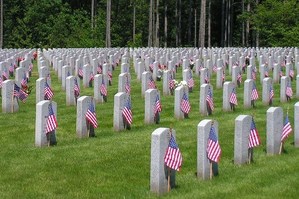
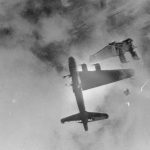 Many people think of Memorial Day as the unofficial start of summer. They plan barbecues and trips with family because they have a three day weekend. Memorial Day, however, is really a day to remember the soldiers who gave their lives fighting for our freedoms in battle. While the work of every service member, whether in battle or in peacetime, is vital, and deserves recognition, Memorial Day is not the proper day to honor every veteran…Veterans Day is the day to honor veterans who came home from war, or who served in peacetime. Many people may consider that a technicality, but when you remember that the military is an institution of protocol and discipline. Things are always done in the proper order and for the proper reasons. That is what makes the military the disciplined, capable, and highly skilled organization that it is. Of course, to those of us who have never served, there is a feeling of wanting to honor all of our service members, and we don’t see the harm in adding those who weren’t killed in action, to the same memorial as those who didn’t make it home, but we would be wrong.
Many people think of Memorial Day as the unofficial start of summer. They plan barbecues and trips with family because they have a three day weekend. Memorial Day, however, is really a day to remember the soldiers who gave their lives fighting for our freedoms in battle. While the work of every service member, whether in battle or in peacetime, is vital, and deserves recognition, Memorial Day is not the proper day to honor every veteran…Veterans Day is the day to honor veterans who came home from war, or who served in peacetime. Many people may consider that a technicality, but when you remember that the military is an institution of protocol and discipline. Things are always done in the proper order and for the proper reasons. That is what makes the military the disciplined, capable, and highly skilled organization that it is. Of course, to those of us who have never served, there is a feeling of wanting to honor all of our service members, and we don’t see the harm in adding those who weren’t killed in action, to the same memorial as those who didn’t make it home, but we would be wrong.
I have been listening to a book about the 8th Air Force in World War II. As the narrator tells the story of a bomber or fighter plane that will not be returning to base, and a crew who had a one way ticket to the war, I find myself thinking about how my dad, Allen Spencer must have felt each time the B-17 bomber, on which he was a top turret gunner, took off on another bomb run. The feeling in his gut as the plane took off, the prayers he was praying for himself and every other crew member on his and every other plane, the sickening feeling as the planes went down or exploded, and the long moments waiting and watching to see how many parachutes emerged from the stricken planes. I know that my dad and every other soldier who returned from the war, lost buddies over there. I don’t think you could ever forget those lost ones, and I don’t think you could see your way clear to honoring the living with the lost.
I know a number of soldiers, both retired and discharged, as well as some who are currently serving in the armed forces. These people know the meaning of each of the military holidays, and in fact, it was one of them 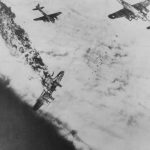
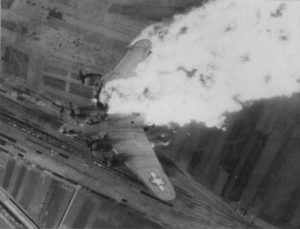 who first told me the difference between the military holidays. Once you know the difference, you really don’t feel right about celebrating the wrong way, because each holiday has its proper purpose. This memorial Day, I honor all of our fallen soldiers of any war, and I pray for the loved ones they left behind when it was known that they got just a one way ticket to war. Your loved one was a great warrior, and you have every reason to be very proud. Honoring our fallen soldiers on this Memorial Day. Rest In Peace.
who first told me the difference between the military holidays. Once you know the difference, you really don’t feel right about celebrating the wrong way, because each holiday has its proper purpose. This memorial Day, I honor all of our fallen soldiers of any war, and I pray for the loved ones they left behind when it was known that they got just a one way ticket to war. Your loved one was a great warrior, and you have every reason to be very proud. Honoring our fallen soldiers on this Memorial Day. Rest In Peace.
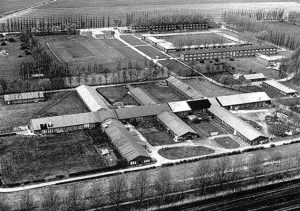 The Neuengamme concentration camp was established in December 1938, and used by the Nazis as a forced labor camp from December 13, 1938 to May 4, 1945, when it was liberated by British troops. At the time of its liberation, about half of the approximately 106,000 Jews held there over time had died. Neuengamme was located on the Elbe river, near Hamburg, Germany. One hundred inmates who were transferred from Sachsenhausen concentration camp, were forced to build the Neuengamme concentration camp. It was established around an empty brickworks in Hamburg-Neuengamme. The bricks produced there were to be used for the “Fuehrer buildings” part of the National Socialists’ redevelopment plans for the river Elbe in Hamburg.
The Neuengamme concentration camp was established in December 1938, and used by the Nazis as a forced labor camp from December 13, 1938 to May 4, 1945, when it was liberated by British troops. At the time of its liberation, about half of the approximately 106,000 Jews held there over time had died. Neuengamme was located on the Elbe river, near Hamburg, Germany. One hundred inmates who were transferred from Sachsenhausen concentration camp, were forced to build the Neuengamme concentration camp. It was established around an empty brickworks in Hamburg-Neuengamme. The bricks produced there were to be used for the “Fuehrer buildings” part of the National Socialists’ redevelopment plans for the river Elbe in Hamburg.
The prisoners worked on the construction of the camp and brickmaking. The bricks were used for regulating the flow of the Dove-Elbe river and the building of a branch canal. The prisoners were also 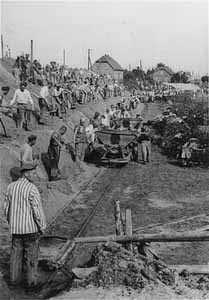 used to mine the clay used to make the bricks. That reminds me of the Jews in Egypt who were forced to build the pyramids. In 1940, the population of the camp was 2,000 prisoners, with a proportion of 80% German inmates among them. Between 1940 and 1945, more than 95,000 prisoners were incarcerated in Neuengamme. On April 10th, 1945, the number of prisoners in the camp itself was 13,500. Over the years that Neuengamme was open, it is estimated that 103,000 to 106,000 people were held there. We may never really know, because they didn’t keep clear records of all the people who went through the camps.
used to mine the clay used to make the bricks. That reminds me of the Jews in Egypt who were forced to build the pyramids. In 1940, the population of the camp was 2,000 prisoners, with a proportion of 80% German inmates among them. Between 1940 and 1945, more than 95,000 prisoners were incarcerated in Neuengamme. On April 10th, 1945, the number of prisoners in the camp itself was 13,500. Over the years that Neuengamme was open, it is estimated that 103,000 to 106,000 people were held there. We may never really know, because they didn’t keep clear records of all the people who went through the camps.
From 1942 on, the inmates were forced to work in the Nazi armament production. At first, the work was performed in the Neuengamme workshops, but soon it was decided to transfer the prisoners to the armaments factories in the surroundings areas. At the end of the war, the prisoners of Neuengamme were spread all over northern Germany. As the Allied troops advanced, hundreds of inmates were forced to dig antitank ditches. In many large north German cities, The prisoners were also require to clear rubble and removed corpses after bombing raids. There were 96 sub-camps, 20 of them for women. In early spring 1945, more than 45,000 inmates were working for the Nazi industry. A third of the women were forced to be among a part of the Nazi 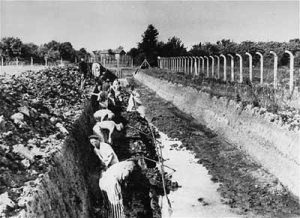 industry workforce. By this time, the internal population of Neuengamme was 13,500, which made it completely overcrowded. The estimated number of victims in Neuengamme is approximately 56,000. Thousands of inmates were hanged, shot, gassed, killed by lethal injection or transferred to the death camps Auschwitz and Majdanek. As the war neared its end, the SS decided to evacuate Neuengamme. They had hoped to avoid having them liberated…probably hoping to regroup further north. This was the start of one of the worst death marches of the war. During these death marches, approximately 10,000 inmates perished by shootings or simply starvation. Nevertheless, the Allies won this war, and then they went in and liberated the prisoners of the many death camp.
industry workforce. By this time, the internal population of Neuengamme was 13,500, which made it completely overcrowded. The estimated number of victims in Neuengamme is approximately 56,000. Thousands of inmates were hanged, shot, gassed, killed by lethal injection or transferred to the death camps Auschwitz and Majdanek. As the war neared its end, the SS decided to evacuate Neuengamme. They had hoped to avoid having them liberated…probably hoping to regroup further north. This was the start of one of the worst death marches of the war. During these death marches, approximately 10,000 inmates perished by shootings or simply starvation. Nevertheless, the Allies won this war, and then they went in and liberated the prisoners of the many death camp.
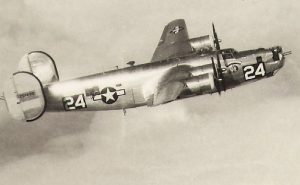 It was during the Battle of the Bulge in World War II, that a B-24J plane that had been dubbed the Tulsamerican went down in the waters off of Croatia on December 17, 1944. Piloted by Army Air Forces 1st Lieutenant Eugene P. Ford, the Tulsamerican carried a crew of nine servicemen. The Tulsamerican was the lead aircraft in a group of six B-24s from the squadron to participate in a combat bombing mission targeting oil refineries at Odertal, Germany. Ford was a member of the 765th Bombardment Squadron, 461st Bombardment Group, 15th Air Force.
It was during the Battle of the Bulge in World War II, that a B-24J plane that had been dubbed the Tulsamerican went down in the waters off of Croatia on December 17, 1944. Piloted by Army Air Forces 1st Lieutenant Eugene P. Ford, the Tulsamerican carried a crew of nine servicemen. The Tulsamerican was the lead aircraft in a group of six B-24s from the squadron to participate in a combat bombing mission targeting oil refineries at Odertal, Germany. Ford was a member of the 765th Bombardment Squadron, 461st Bombardment Group, 15th Air Force.
During a bombing run on December 17, 1944, the Tulsamerican was badly damaged. Ford and his crew, aboard the Tulsamerican were assigned to be the lead aircraft in a group of six B-24s from the squadron participating in a combat bombing mission targeting oil refineries at Odertal, Germany. As they came out of a cloud bank near the target, the squadron was attacked by more than 40 German Me-109 and FW-190 fighters. The unit suffered heavy losses. Three of their six aircraft were shot down and the other three damaged.
The Tulsamerican suffered heavy damage, and they knew they would not make it back to base. The only option 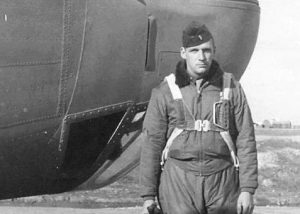 for a possible forced landing was the Isle of Vis in the Adriatic Sea in what is now Croatia. Landing a B-24J on the Isle of Vis was next to impossible, but Ford knew he had to try. Unfortunately, they couldn’t quite make it to the Isle of Vis, and ended up crashing into the Adriatic Sea. Seven of Ford’s crewmembers survived and were rescued, but three, including Ford, were killed in the crash, and their bodies were unable to be recovered.
for a possible forced landing was the Isle of Vis in the Adriatic Sea in what is now Croatia. Landing a B-24J on the Isle of Vis was next to impossible, but Ford knew he had to try. Unfortunately, they couldn’t quite make it to the Isle of Vis, and ended up crashing into the Adriatic Sea. Seven of Ford’s crewmembers survived and were rescued, but three, including Ford, were killed in the crash, and their bodies were unable to be recovered.
As most of us know, military men and women do not like to leave a man behind. Nevertheless, at the time, they were unable to recover the three missing men, and they were officially listed as MIA. Ford left behind an infant daughter and his 21-year-old widow, Marian McMillen Ford, who was pregnant with their son, Richard Stanton Ford. For years it seemed that Ford would never be recovered and laid to rest, but in July of 2017, his remains and his gold wedding band were recovered during a 19 day international scientific mission. Through DNA testing at the Defense POW/MIA Accounting Agency’s forensic anthropology lab in Hawaii, Ford’s remains were finally identified, and his family had closure.
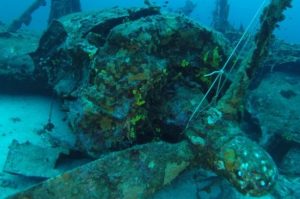
It was decided that ford would be buried in Arlington Cemetery. Ford’s only surviving child, 74 year-old Norma Ford Beard, traveled from her home near Indianapolis to attend the ceremony. She said her brother, Richard, who retired from the Navy after 20 years with two tours of duty in Vietnam, developed a keen interest in his father’s fate before he died in 2008. “He asked me if they ever found our father that I would see that he be buried at Arlington. I promised him that,” Beard said. Now Ford is buried next to the son he never got to meet. A very fitting place, if you ask me. Two honorable men laid to rest side by side…finally.
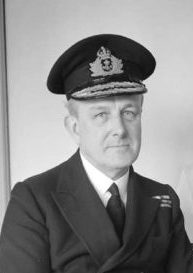 There was, during the Second World War, a somewhat strange and almost morbid plan that was concocted to dupe the Germans into believing that the Allies were going to invade Greece in 1943, when in fact, they were going to invade Sicily, some 500 miles away. The success of the mission really depended on the element of surprise, and in the end, the Allies needed something that would be believable to the Germans.
There was, during the Second World War, a somewhat strange and almost morbid plan that was concocted to dupe the Germans into believing that the Allies were going to invade Greece in 1943, when in fact, they were going to invade Sicily, some 500 miles away. The success of the mission really depended on the element of surprise, and in the end, the Allies needed something that would be believable to the Germans.
The thing that made the operation morbid was that in the end, they would use a dead body to bring about their deception. In their plan a body was dumped in the sea, to be discovered by Axis forces, carrying fake secret documents suggesting the invasion would be staged in Greece. They were a bit shocked when their plan worked, but work it did. The German troops were diverted to Greece, and Operation Mincemeat became a huge success, but even after it was over, it remained a source of secrecy, confusion, and conspiracy theory. The biggest source of confusion being…just who was this man who was found floating in the ocean, and how did he really die? For most people, the operation remains a mystery to this day, but one man believes that he now knows the true identity of the man found floating in the ocean.
In the 1956 film called “The Man Who Never Was,” one historian claims to have finally established beyond any reasonable doubt the identity of the person who played the part of the dead man, He believes he was a homeless Welshman named Glyndwr Michael. The body, which was given the identity of a fake Royal Marine, Major William Martin, was dropped into the sea off Spain in 1943. Winston Churchill had remarked that “Anyone but a bloody fool would know it was Sicily”, but after the tides carried Major Martin’s body into the clutches of Nazi agents, Hitler and his High Command became convinced Greece was the target. “You can forget about Sicily. We know it’s in Greece,” proclaimed General Alfred Jodl, head of the German supreme command operations staff.
“Mincemeat swallowed, rod, line and sinker” was the message sent to Churchill after the Allies learned the plot had worked. In recent years, there have been repeated claims that Mincemeat’s chief planner, Lieutenant Commander Ewen Montagu, was so intent on deceiving the Germans that he stole the body of a crew member from HMS Dasher, a Royal Navy aircraft carrier which exploded off the Scottish coast in March 1943, and lied to the dead man’s relatives. In 2003, a documentary based on 14 years of research by former police officer Colin 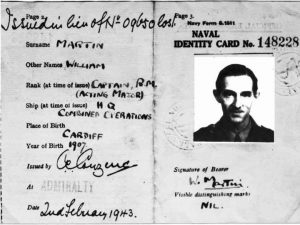 Gibbon claimed that ‘Major Martin’ was Dasher sailor Tom Martin. Then in 2004, official sanction appeared to be given to another candidate, Tom Martin’s crewmate John Melville. At a memorial service on board the current HMS Dasher, a Royal Navy patrol vessel, off the coast of Cyprus, Lieutenant Commander Mark Hill named Mr Melville as Major Martin, describing him as “a man who most certainly was”. Mr Melville’s daughter, Isobel Mackay, later told The Scotsman newspaper: “I feel very honored if my father saved 30,000 Allied lives.” I don’t suppose that we will ever know who the man really was, without exhuming his body, and that hardly seems right. Whoever he was, his family can rest assured that he saved many lives that day.
Gibbon claimed that ‘Major Martin’ was Dasher sailor Tom Martin. Then in 2004, official sanction appeared to be given to another candidate, Tom Martin’s crewmate John Melville. At a memorial service on board the current HMS Dasher, a Royal Navy patrol vessel, off the coast of Cyprus, Lieutenant Commander Mark Hill named Mr Melville as Major Martin, describing him as “a man who most certainly was”. Mr Melville’s daughter, Isobel Mackay, later told The Scotsman newspaper: “I feel very honored if my father saved 30,000 Allied lives.” I don’t suppose that we will ever know who the man really was, without exhuming his body, and that hardly seems right. Whoever he was, his family can rest assured that he saved many lives that day.
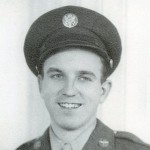
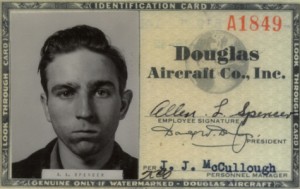 A while back, my sister, Cheryl Masterson and I were talking about our Dad, Allen Spencer’s military training. Like much of Dad’s military service, big discussions about his training days were non-existent. So, I decided to trace his military career, to the best ability I could, and basically take a walk in his footsteps. We knew that he shipped out of Fort Snelling, Minnesota, and then spent time in Salt Lake City, Utah and in Kearney, Nebraska. We weren’t sure exactly where his basic training took place or his training for the B-17. That conversation got my curiosity going, and I decided that I needed to check it out. It’s not always easy to research a persons path through every aspect of their lives, but with the knowledge that he initially started out at Fort Snelling, I hoped to trace the rest of his journey through World War II. Fort Snelling, it turns out was a Reception Center. The men and women started there, received their vaccinations, medical exams, and their gear. They were classified and assigned to a unit. Then they were shipped out for their basic training.
A while back, my sister, Cheryl Masterson and I were talking about our Dad, Allen Spencer’s military training. Like much of Dad’s military service, big discussions about his training days were non-existent. So, I decided to trace his military career, to the best ability I could, and basically take a walk in his footsteps. We knew that he shipped out of Fort Snelling, Minnesota, and then spent time in Salt Lake City, Utah and in Kearney, Nebraska. We weren’t sure exactly where his basic training took place or his training for the B-17. That conversation got my curiosity going, and I decided that I needed to check it out. It’s not always easy to research a persons path through every aspect of their lives, but with the knowledge that he initially started out at Fort Snelling, I hoped to trace the rest of his journey through World War II. Fort Snelling, it turns out was a Reception Center. The men and women started there, received their vaccinations, medical exams, and their gear. They were classified and assigned to a unit. Then they were shipped out for their basic training.
Most of the men in dad’s original unit would go on to become part of the transport or supply teams, but because my dad had a job building airplanes for Douglas Aircraft Company prior to enlisting in the Army Air Force, he was moved to a unit that would spend the war in a B-17G flying Fortress Bomber. For my dad, it was an epic job. He often wrote home to his family about just how amazing the B-17 Bomber was, and how proud 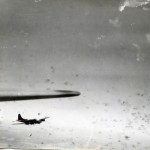
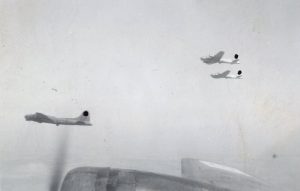 he was to be serving on one. Part of dad’s job was to be the flight engineer, another position that stemmed from his vast knowledge of airplanes. The flight engineer knew the all equipment on the B-17 better than the pilot and any other crew member from the engines to the radio equipment to the armament to the engines to the electrical system and to anything else. Many flight engineers served as maintenance crew chiefs before moving to the position of a B-17 flight engineer. The flight engineer was also the top turret gunner. Dad’s training for his work took him to Miami Beach, Florida, then to Gulfport, Mississippi, and Dyersburg, Tennessee.
he was to be serving on one. Part of dad’s job was to be the flight engineer, another position that stemmed from his vast knowledge of airplanes. The flight engineer knew the all equipment on the B-17 better than the pilot and any other crew member from the engines to the radio equipment to the armament to the engines to the electrical system and to anything else. Many flight engineers served as maintenance crew chiefs before moving to the position of a B-17 flight engineer. The flight engineer was also the top turret gunner. Dad’s training for his work took him to Miami Beach, Florida, then to Gulfport, Mississippi, and Dyersburg, Tennessee.
In Gulfport, Mississippi, dad was trained as a flight airplane mechanic, and it was here that he volunteered to become an aerial gunner as well. He received his wings in November 1943, following gunnery training in Las Vegas, Nevada. Dyersburg Army Air Force Base was the largest combat aircrew training school built during the early war years. It was the only inland B-17 Flying Fortress training base east of the Mississippi River. The base was located on 2,541 acres, not including the practice range. Approximately 7,700 crew men received their last phase training at DAAB. From Dyersburg AAB, dad was sent to Kearney, Nebraska. There he and his crew were assigned a brand new B-17G bomber. Shortly thereafter they flew to New York to be dispatched to their base in the European Theater…Great Ashfield, Suffolk, England. Before arriving there, he wasn’t even sure where he was going, because these things were kept top secret, and were revealed on a need-to-know basis. Based out of Great Ashfield, dad flew 36 missions, one more that the required 35, having volunteered to fill in for a sick 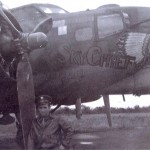
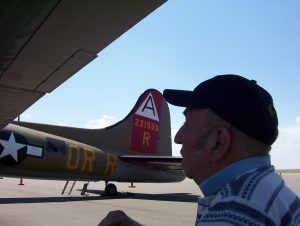 crewmember on the final flight. In one of his letters, he told his family not to worry about him, because as he said, “I’m not afraid of what the near future might bring. I’m going into combat fully confident of my plane, crew, and myself. And I know that with the help of God, I’ll come home again in just as good a condition as I am right now.” And so he did. Today would have been my dad’s 95th birthday. Happy birthday in Heaven Dad. We love and miss you very much and we are so proud of you.
crewmember on the final flight. In one of his letters, he told his family not to worry about him, because as he said, “I’m not afraid of what the near future might bring. I’m going into combat fully confident of my plane, crew, and myself. And I know that with the help of God, I’ll come home again in just as good a condition as I am right now.” And so he did. Today would have been my dad’s 95th birthday. Happy birthday in Heaven Dad. We love and miss you very much and we are so proud of you.
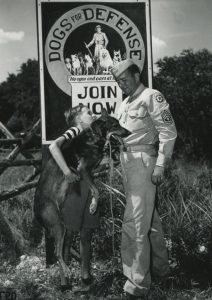 Most of us think of dogs as pets, and so they are, but they are so much more. Dogs know when their master is sick, lonely, or worried. Dogs ask little of their masters, and give so much back, but there is a group of dogs who are working dogs. In fact, we often see dogs in everyday life and think little of their presence, when in fact, their work is vital to those they work for. One of the most well known working dog groups is the K-9 Units. We think of these dogs as police dogs, and so they are, but originally, the K-9 Corps were founded in World War II. Of course, dogs were used long before that war, but not in the capacity of World War II.
Most of us think of dogs as pets, and so they are, but they are so much more. Dogs know when their master is sick, lonely, or worried. Dogs ask little of their masters, and give so much back, but there is a group of dogs who are working dogs. In fact, we often see dogs in everyday life and think little of their presence, when in fact, their work is vital to those they work for. One of the most well known working dog groups is the K-9 Units. We think of these dogs as police dogs, and so they are, but originally, the K-9 Corps were founded in World War II. Of course, dogs were used long before that war, but not in the capacity of World War II.
The Romans used dogs in battles, sending them in to attack the enemy. Native Americans used them as pack animals, as well as sentry animals. Even in the Middle Ages, dogs were sent into battle equipped with their own armor. Modern European societies had long established traditions of using dogs in war. But, I think that their use was probably made most famous 77 years ago, when in January of 1942, Dogs for Defense, Inc. was established as a national organization to help procure dogs for war training purposes. Although some dogs were acquired through purchase, it was largely through the dog owner population’s patriotic sentiments that most dogs were acquired for training. That really amazes me. I understand patriotism, and how people would volunteer in the service, but it seems strange to me to volunteer your dog. 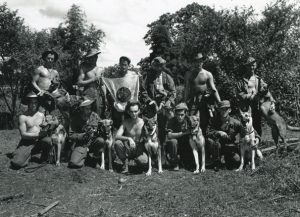 Nevertheless, they did. It was the job of Dogs For Defense not only to procure the dogs, but also to train them. Once trained, the dogs were to be given to the Quartermaster General, who then turned them over to the Plant Protection Branch and Inspection Division. Many thought the primary use of dogs would be as sentries for civilian war plants and quartermaster depot, but dogs have proven to be a much more.
Nevertheless, they did. It was the job of Dogs For Defense not only to procure the dogs, but also to train them. Once trained, the dogs were to be given to the Quartermaster General, who then turned them over to the Plant Protection Branch and Inspection Division. Many thought the primary use of dogs would be as sentries for civilian war plants and quartermaster depot, but dogs have proven to be a much more.
There are dogs that can sniff out drugs, gun powder…and the enemy. The DFD trained over 10,000 dogs. Most of the dogs were used at home for sentry duty, however, more than 1,800 dogs were sent into combat starting in 1942. The US Marine Corps sent over 1,000 dogs to be trained at their Camp Lejeune facility. Unfortunately, many commanders were unfamiliar, and maybe a little distrusting of the dogs, and didn’t know how to use them to their advantage. Seven Quartermaster Corps War Dog Platoons were sent to the European Theatre of Operations, but they did not have much success, probably due mostly to the lack of training with their handlers. In 1943, the QMC sent a detachment of six scout dogs and two messenger dogs to operate in the 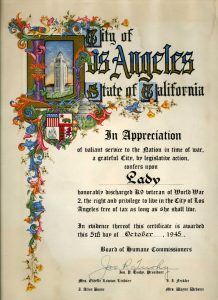 Pacific Theatre. This was a test of their value in combat conditions. The Japanese troops had deeply entrenched themselves on many islands in the Pacific theater of operations. Thousands were hiding in caves and in the dense jungles. They would lie very still, in wait for patrolling Marines and soldiers and then ambush them before the troops ever detected enemy forces. This is where the dogs proved their value. The first war dog platoons took to the Pacific island of New Britain. Here Marine war dogs attached to the Sixth Army first worked on sentry duty. Once a beachhead was established the dogs and handlers began conducting their patrols. They went on forty-eight patrols in fifty-three days. The dog patrols captured or killed 200 Japanese soldiers. This early success of war dog platoons set the standard for what could be expected, and what could not, from a K-9 detachment. I think that the more training given to both dogs and handlers, the better the results will be, as we have seen in K-9 police dogs in modern times.
Pacific Theatre. This was a test of their value in combat conditions. The Japanese troops had deeply entrenched themselves on many islands in the Pacific theater of operations. Thousands were hiding in caves and in the dense jungles. They would lie very still, in wait for patrolling Marines and soldiers and then ambush them before the troops ever detected enemy forces. This is where the dogs proved their value. The first war dog platoons took to the Pacific island of New Britain. Here Marine war dogs attached to the Sixth Army first worked on sentry duty. Once a beachhead was established the dogs and handlers began conducting their patrols. They went on forty-eight patrols in fifty-three days. The dog patrols captured or killed 200 Japanese soldiers. This early success of war dog platoons set the standard for what could be expected, and what could not, from a K-9 detachment. I think that the more training given to both dogs and handlers, the better the results will be, as we have seen in K-9 police dogs in modern times.
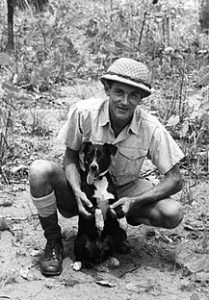 Gunner was a stray male Kelpie, born in August 1941, who became notable for his reliability to accurately alert Allied Air Force personnel that Japanese aircraft were approaching Darwin during the Second World War. Gunner was six months old when he was found whimpering under a destroyed mess hut at Darwin Air Force base where he suffering a broken leg on February 19, 1942, following the first wave of Japanese attacks on Darwin.
Gunner was a stray male Kelpie, born in August 1941, who became notable for his reliability to accurately alert Allied Air Force personnel that Japanese aircraft were approaching Darwin during the Second World War. Gunner was six months old when he was found whimpering under a destroyed mess hut at Darwin Air Force base where he suffering a broken leg on February 19, 1942, following the first wave of Japanese attacks on Darwin.
Gunner was taken to a field hospital, but the doctor insisted he could not fix a “man” with a broken leg without knowing his name and serial number. The doctor repaired and plastered his leg after the air force personnel replied that his name was “Gunner” and his number was “0000”. Gunner entered the airforce on that day. It might have been unofficial, but only is the way he was “drafted.” Gunner’s Air Force career was very real. Leading Aircraftman Percy Westcott, one of the two airmen who found Gunner, took ownership of him and became his master and handler. Gunner was badly shaken after the bombing and quite skittish, but being only six months old he quickly responded to the attention of the men on base.
About a week later, Gunner first demonstrated his remarkable hearing skills. The men were working on the airfield, when Gunner became agitated. He started to whine and jump. A little while later, the sound of approaching airplane engines was heard by the airmen. Suddenly, a wave of Japanese raiders appeared in the skies above Darwin and began bombing and strafing the town. Somehow…Gunner knew. Two days later, Gunner became agitated again, and not long afterwards came another air attack. In the months that followed, the same pattern played out every time an attack occurred. Long before the sirens sounded, Gunner would become agitated and head for shelter. Because of Gunner’s amazing hearing he was able to warn air force personnel of approaching Japanese aircraft up to 20 minutes before they arrived and before they showed up on the radar. Gunner was never agitated when he heard Allied planes taking off or landing….just the enemy aircraft. Somehow Gunner could differentiate the sounds of Allied and enemy aircraft. He was so reliable that Wing Commander McFarlane gave approval for Westcott to sound a portable air raid siren whenever Gunner’s 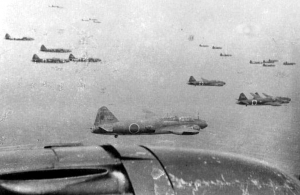 whining or jumping alerted him. Before long, there were a number of stray dogs roaming the base. McFarlane gave the order that all dogs be shot, with the exception of Gunner. They couldn’t afford any distractions.
whining or jumping alerted him. Before long, there were a number of stray dogs roaming the base. McFarlane gave the order that all dogs be shot, with the exception of Gunner. They couldn’t afford any distractions.
Gunner became such a part of the air force that he slept under Westcott’s bunk, showered with the men in the shower block, sat with the men at the outdoor movie pictures, and went up with the pilots during practice take-off and landings. When Westcott was posted to Melbourne 18 months later, Gunner stayed in Darwin, looked after by the RAAF butcher. It is unknown what happened to Gunner after the war, but he was a most amazing dog.
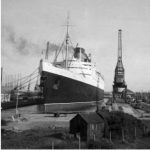 One of the most elegant ships ever built, RMS Queen Elizabeth, was one of the two superliners built by John Brown and Company in Clydebank, Scotland, in the 1930s. The ship did not start out as RMS Queen Elizabeth, but rather as Hull 552. Later, it was named in honor of Queen Elizabeth, and launched, on 27 September 1938. The RMS Queen Elizabeth was 1,031 feet long and 118.5 feet wide. It was the largest passenger liner ever constructed…until then anyway.
One of the most elegant ships ever built, RMS Queen Elizabeth, was one of the two superliners built by John Brown and Company in Clydebank, Scotland, in the 1930s. The ship did not start out as RMS Queen Elizabeth, but rather as Hull 552. Later, it was named in honor of Queen Elizabeth, and launched, on 27 September 1938. The RMS Queen Elizabeth was 1,031 feet long and 118.5 feet wide. It was the largest passenger liner ever constructed…until then anyway.
During the late 1930s, workers at a Scottish construction site began building a sea vessel for the Cunard Line ocean liner company that would be larger and more luxurious than anything the world had ever seen. However, the outbreak of World War II in 1939 prevented the completion of the Queen Elizabeth‘s finer points. The vessel was hastily made seaworthy for wartime service and was used as a transport vessel for the Allies, carrying massive amounts of supplies and several hundred thousand troops around the world until the war’s end. Because of the concerns over German bombing, the ship was moved to New York to harbor it in a safer place.
After the war, the ship, which was equipped with a 200,000 horsepower engine, was embellished with an elegant art deco style. It made its public debut in 1946, leaving Southampton, England, on its first luxurious 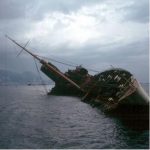 run across the Atlantic. The ship continued to be a luxury passenger liner until it retirement in 1968.
run across the Atlantic. The ship continued to be a luxury passenger liner until it retirement in 1968.
Then, the Queen Elizabeth was auctioned off to the highest bidder, eventually being purchased in 1970 by C.W. Tung, a Taiwanese shipping tycoon. Tung renamed the vessel Seawise University and began work on converting the ship into a learning center that would tour the world. However, in early 1972, as the mobile university neared completion, a fire destroyed the pride of the Cunard Line. The fire broke out while the ship was docked in Hong Kong Harbor, and by the next morning the famous vessel was a total loss on the bottom of the sea floor.
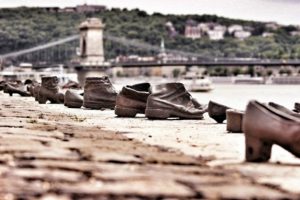 While looking at some historic photos, I came across one that was both intriguing, and sad. The title of the photograph was as intriguing as the photograph itself. Shoes on the Danube Banksdepicts a memorial in Budapest, Hungary that was conceived by film director Can Togay. The memorial sits on the east and of the Danube River. Togay worked with sculptor Gyula Pauer to create a memorial to honor the Jews who were killed by fascist Arrow Cross militiamen in Budapest during World War II.
While looking at some historic photos, I came across one that was both intriguing, and sad. The title of the photograph was as intriguing as the photograph itself. Shoes on the Danube Banksdepicts a memorial in Budapest, Hungary that was conceived by film director Can Togay. The memorial sits on the east and of the Danube River. Togay worked with sculptor Gyula Pauer to create a memorial to honor the Jews who were killed by fascist Arrow Cross militiamen in Budapest during World War II.
As I looked at the picture of many pairs of shoes, the magnitude of what had happened there, and exactly what I was looking at hit me. These shoes were not just shoes, they were people…innocent people, who lined up and shot for no other reason than that they were Jewish. These people were told to remove their shoes, and then they were shot. Their lifeless bodies fell into the river and were swept downstream. There was no funeral, no burial…despite the traditions that are set up for Jewish burial. Of course, I know that not every Jewish death can be handles in the Jewish traditions, but these people were murdered in such a way as to humiliate them, including the lack of a traditional burial.
The monument along the Danube River represents the lives of the people who were murdered, there is no way to really represent the people, because no one knows who they were, what they looked like, or even how many there were for sure, but rather the monument depicts their shoes left behind on the bank. It is the only real connection we can have to these victims of such horrible hatred. The brutal treatment of the approximately 3,500 people, 800 of them Jews, and the rest accused of Jewish activities, is beyond horrid. These people were forced to strip naked on the banks of the Danube and face the river. Then, a firing squad shot the prisoners at close range in the back so that they fell into the river to be washed away.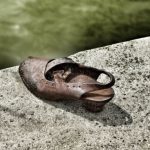
The monument is located on the Pest side of the Danube Promenade in line with where Zoltan Street would meet the Danube if it continued that far, about 980 feet south of the Hungarian Parliament and near the Hungarian Academy of Sciences…between Roosevelt Square and Kossuth square. The sculptor created sixty pairs of period-appropriate shoes out of iron. The shoes are attached to the stone embankment, and behind them lies a 131 foot long, 27 inch high stone bench. At three points are cast iron signs, with the following text in Hungarian, English, and Hebrew: “To the memory of the victims shot into the Danube by Arrow Cross militiamen in 1944–45. Erected 16 April 2005.”
Most of the murders along the edge of the River Danube took place around December 1944 and January 1945, when the members of the Arrow Cross Party police (“Nyilas”) took as many as 20,000 Jews from the newly established Budapest ghetto and executed them along the river bank. There were, of course, some survivors who managed to make it out, and lived to tell their stories. On of those Was Tommy Dick, who wrote the book, “Getting Out Alive.” I have not read the book yet, but after seeing this memorial, I will be reading it very soon.
There were heroes in Budapest too. Valdemar Langlet, head of the Swedish Red Cross in Budapest, with his wife Nina, and later the diplomat Raoul Wallenberg and 250 coworkers were working around the clock to save the Jewish population from being sent to Nazi concentration camps. This group later grew in number to approximately 400. Lars and Edith Ernster, Jacob Steiner, and many others were housed at the Swedish Embassy in Budapest and 32 other buildings throughout the city which Wallenberg had rented and declared as extraterritorially Swedish to try to safeguard the residents. Italian Giorgio Perlasca did the same, sheltering Jews in the Spanish Embassy.
On the night of January 8, 1945, an Arrow Cross execution brigade forced all the inhabitants of the building on 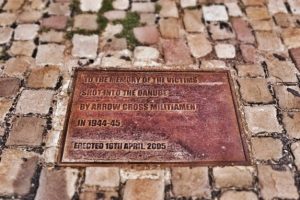 Vadasz Street to the banks of the Danube. At midnight, Karoly Szabo and 20 policemen with drawn bayonets broke into the Arrow Cross house and rescued everyone. Among those saved were Lars Ernster, who fled to Sweden and became a member of the board of the Nobel Foundation from 1977 to 1988, and Jacob Steiner, who fled to Israel and became a professor at the Hebrew University of Jerusalem. Steiner’s father had been shot dead by Arrow Cross militiamen 25 December 1944, and fell into the Danube. His father had been an officer in World War I and spent four years as a prisoner of war in Russia. These were horrific murders, and after looking at the pictures of this memorial and reading about the horrible murders, my mind cannot unsee the images it has conjured up of this atrocity.
Vadasz Street to the banks of the Danube. At midnight, Karoly Szabo and 20 policemen with drawn bayonets broke into the Arrow Cross house and rescued everyone. Among those saved were Lars Ernster, who fled to Sweden and became a member of the board of the Nobel Foundation from 1977 to 1988, and Jacob Steiner, who fled to Israel and became a professor at the Hebrew University of Jerusalem. Steiner’s father had been shot dead by Arrow Cross militiamen 25 December 1944, and fell into the Danube. His father had been an officer in World War I and spent four years as a prisoner of war in Russia. These were horrific murders, and after looking at the pictures of this memorial and reading about the horrible murders, my mind cannot unsee the images it has conjured up of this atrocity.
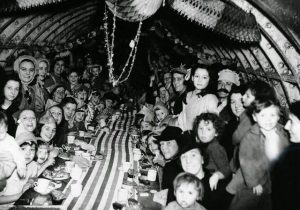 When disaster strikes, and homes are in ruin, people try to come together to help return a sense of normalcy to the people affected by the disaster. Disasters happen quickly, and the devastation is often heavy. It is a difficult thing to help people heal. While one disaster or event is often the same as another in terms of damage, something we somehow don’t connect to that same kind of devastation, is war. I’m not sure why, but when I think of war,I picture a battle held in the middle of a vast desert, with no civilization in sight. of course, when I really think about it, I now that is not reality, but rather my mind trying to fit war into a box of civility. In reality, there is nothing civil about war. Gun shots, bombs, and land mines aren’t picky about who they hit. Soldier or civilian…all are fair game in a war. And towns…well, there is often little to nothing left after a bomb hits.
When disaster strikes, and homes are in ruin, people try to come together to help return a sense of normalcy to the people affected by the disaster. Disasters happen quickly, and the devastation is often heavy. It is a difficult thing to help people heal. While one disaster or event is often the same as another in terms of damage, something we somehow don’t connect to that same kind of devastation, is war. I’m not sure why, but when I think of war,I picture a battle held in the middle of a vast desert, with no civilization in sight. of course, when I really think about it, I now that is not reality, but rather my mind trying to fit war into a box of civility. In reality, there is nothing civil about war. Gun shots, bombs, and land mines aren’t picky about who they hit. Soldier or civilian…all are fair game in a war. And towns…well, there is often little to nothing left after a bomb hits.
During World War II, London was often the targets of the German Luftwaffe, and the bombs they dropped, devastated many parts of London. From September 7, 1940, London was systematically bombed by the Luftwaffe for 56 out of the following 57 days and nights, in what was called “The Blitz.” Most notable was a large daylight attack against London on September 15th. Of course, these weren’t the only bombings, and the people of London didn’t know when or if it was safe to be out of the bomb shelters. Life in London had taken on eerie gloom,as people continued to seek refuge in the bomb shelters, because that was the only safe place to be. The biggest problem was that the bomb shelters were also gloomy, boring, and generally depressing. The children probably suffered the most, because kids don’t really understand all this hatred and killing. Their world had been turned upside down…and they didn’t know why.
By the end of 1940, 24,000 civilians had been killed in the Blitz and hundreds of thousands made homeless. In November, German bombers had obliterated Coventry city center and there had been particularly fierce raids on Manchester and Liverpool in the days leading up to Christmas. The public were now mourning the loss of their loved ones on the home front and in combat, as well as praying for the 41,000 British soldiers captured on the continent, but it was the children, in my mind, who suffered the most. Their childlike innocence was completely destroyed, along with their homes. Their parents, and other adults made the decision to change their little world, even if it was only for a short time. They didn’t have much, but they put together whatever they could to lift the spirits of these scared children. Christmas parties were held for the children and the shelter walls were decorated with paper chains and decorations, while amateur singing nights, discussion groups, and sewing circles were held regularly.
In order to avoid the bombs, many families spent some of the holidays in air-raid shelters and other places of refuge. They decked out their temporary homes with makeshift decorations…and very short Christmas trees because of the height of the shelters. Even if gas or electricity was available, Christmas dinner would have still been an amazing feat, because turkey was so expensive. Most people made do with other cuts of meat, which were still expensive. A family of four’s weekly meat ration probably wouldn’t even cover the cost of a small chicken. One alternative was home-raised chickens or rabbits, much to the shock of young children who often regarded them as pets. Home-grown vegetables and chutneys would have also made the table. Rations were 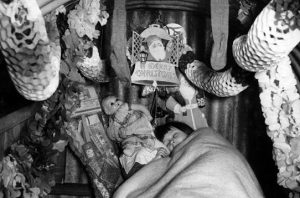 scrimped and saved including ham, bacon, butter, suet, and margarine. The tea and sugar rations were increased in the week before Christmas. Very little fruit was imported and nuts were very costly. Consequently, cooks had to improvise Christmas cakes and puddings devoid of dried fruit and marzipan, using instead sponge or other unlikely ingredients. Alcohol was available but, horribly expensive. And there would be no after-dinner French cheeses or brandy due to the German occupation. It was a poor Christmas party in comparison to those in the past, but it served to remind all the people that Christmas is more about the blessings in life, than it is about the things we are given.
scrimped and saved including ham, bacon, butter, suet, and margarine. The tea and sugar rations were increased in the week before Christmas. Very little fruit was imported and nuts were very costly. Consequently, cooks had to improvise Christmas cakes and puddings devoid of dried fruit and marzipan, using instead sponge or other unlikely ingredients. Alcohol was available but, horribly expensive. And there would be no after-dinner French cheeses or brandy due to the German occupation. It was a poor Christmas party in comparison to those in the past, but it served to remind all the people that Christmas is more about the blessings in life, than it is about the things we are given.

